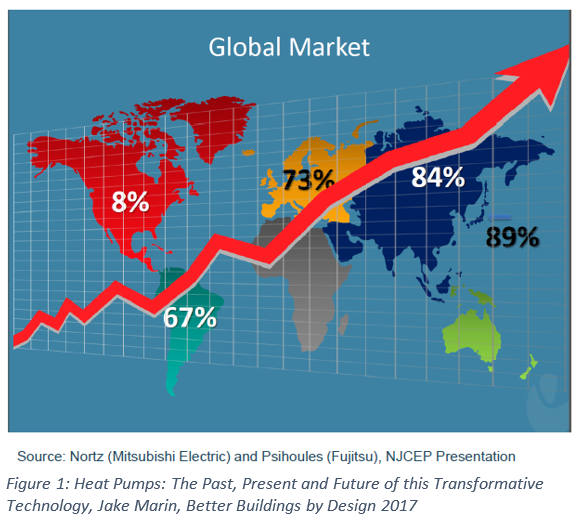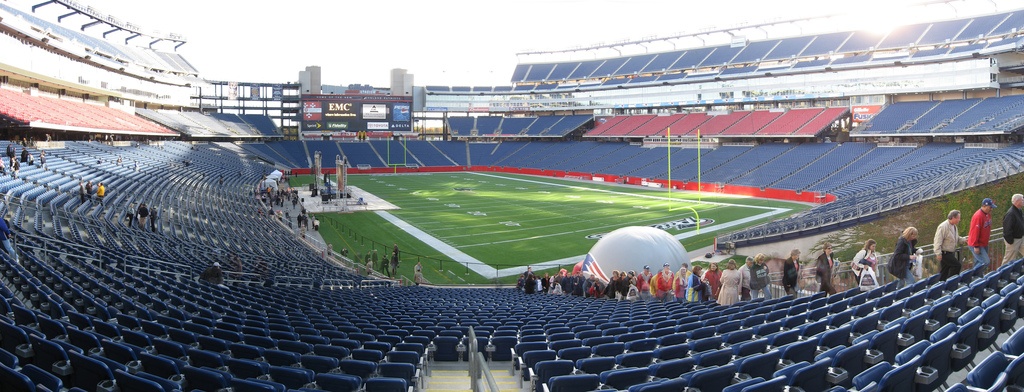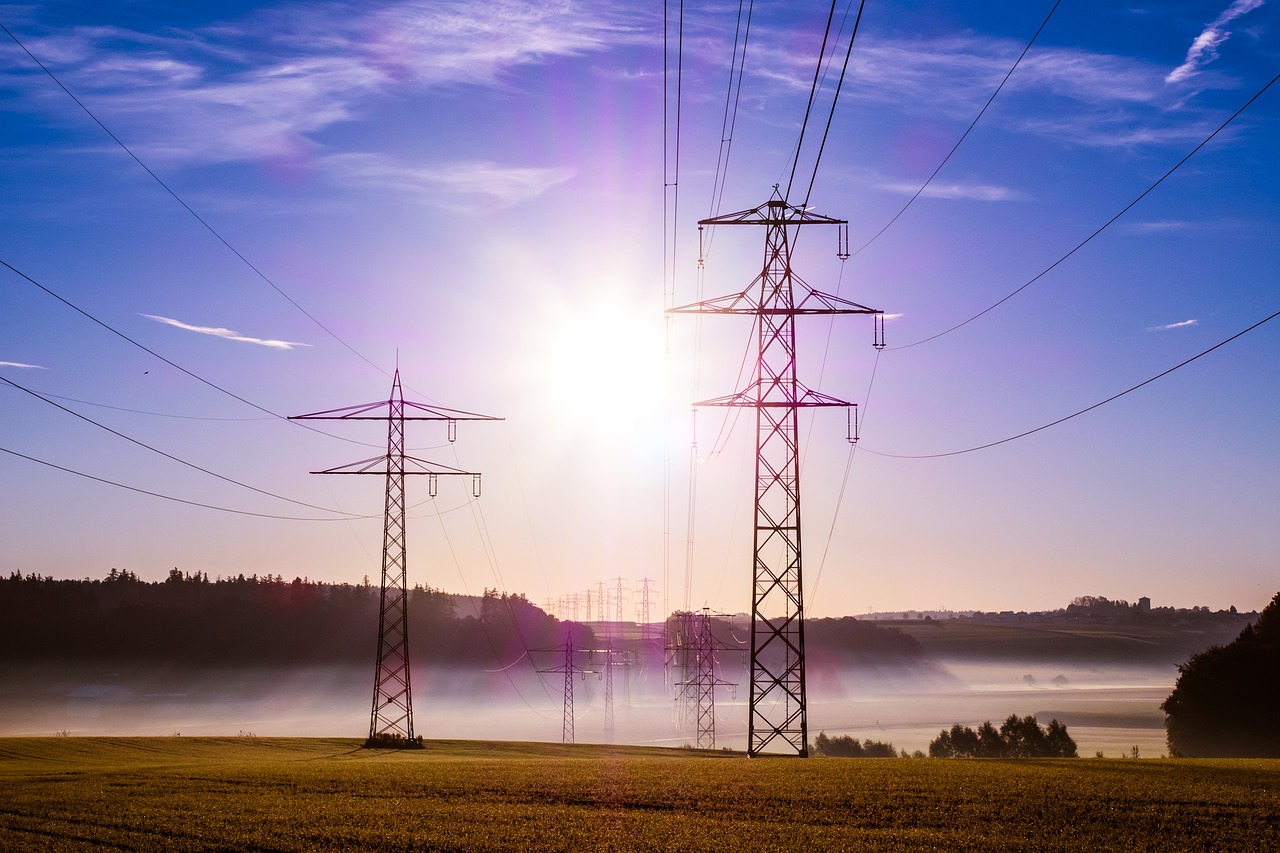When we undertake energy analysis for commercial building energy retrofits, retro-commissioning, and even new construction projects, we normalize the energy savings to try to reflect average savings over the life of the measures. For measures like HVAC upgrades, savings are usually weather-dependent. The industry has used Typical Meteorological Year (TMY) data as the basis for weather normalization. These TMY data are generated by the National Renewable Energy Labs (NREL) and include actual weather data that is determined by NREL to be representative of typical weather over time for each month.
3 min read
Is Typical Meteorological Data Relevant for Energy Analysis? (Part 1)
By Jennifer Chiodo on Mar 1, 2017 10:00:00 AM
Topics: Sustainability Evaluation Measurement & Verification (EM&
3 min read
Heat Pumps Catered to Colder Climates; Will Increased U.S. Adoption Continue?
By Gretchen Schimelpfenig on Feb 22, 2017 10:00:00 AM
The origin stories for heat pump technology are economic. Applying Lord Kelvin’s theory that disputed the concept that heat could only flow ‘downhill’, Peter von Rittinger turned an expensive wood-based salt processing enterprise into a money maker by using heat pumps to desiccate salt brine. In the 1970s during the oil embargo, modern heat pump sales increased by 500% as heating and cooling costs squeezed homeowners. The innovation of ductless heat pumps in Asia created an alternative to costly kerosene space heaters and PTAC units. The energy efficiency of heat pumps directly translates into financial savings; why does the U.S. market still pale in comparison to the rest of the globe (Figure 1)?
Topics: Sustainability Energy Efficiency
3 min read
Football Stadiums and Energy Efficiency. Fantasy?
By Katie Mason on Dec 21, 2016 10:00:00 AM
Given that we're solidly into football season, we thought it was a good time to revisit this post by Katie from last year about stadium energy efficiency. Enjoy.
Originally Posted November 12, 2015
After recently attending a New England Patriot’s football game at Gillette Stadium in Foxboro, Massachusetts, I was overwhelmed by the size of both the structure and the population density served during the four plus hours that the game is taking place. The relatively new Gillette Stadium is also a completely open configuration located in a cold climate. Unsurprisingly, my thoughts immediately turned to energy consumption and sustainability.
Topics: Sustainability Energy Efficiency
3 min read
Winter Olympics 2050 — Dubai, UAE?
By Ben Fowler on Dec 8, 2016 10:00:00 AM
I originally posted this in 2014. But, with Killington recently hosting a World Cup race in November, and given how much they relied on artificial snow, it seemed appropriate to bubble it back up. Snowmaking can be an extremely energy-intensive activity. With fewer solidly snowy winters, can skiing be sustainable [PDF]?
-Ben
The 2014 Winter Olympics being held in Sochi, Russia are located at one of the warmest locations in the history of the games. Setting aside for now the slow creep of a warming climate, Sochi, located at the eastern shores of the Black Sea, is a humid subtropical climate with an average winter temperature of around 50F during the day and still above freezing at night. In the higher elevations in the nearby Caucasus Mountains, where the events are taking place, daytime temperatures still average above freezing during the day. So, while it is a far better location for the actual “winter” portion of the games than the palm-tree-lined streets of the city of Sochi proper, it still is not the ideal location to host the Winter Games.
Topics: Sustainability Public Policy
2 min read
LED Lighting as the Future of Demand Management
By Jennifer Chiodo on Nov 30, 2016 10:00:00 AM
I had hoped to share my recent sci-fi story about future decisions that might need to be made around a demand-constrained grid in the era of extreme heat waves and self-driving electric vehicles. But, fiction is not the point of this blog. If you want to receive a copy of the story, feel free to request it – we monitor comments. In this post, I’ll discuss a little of the back-and-forth we’ve been having regarding the New England Grid [PDF] and demand constraints.
Topics: Sustainability Energy Efficiency
3 min read
HFC Refrigerants Are on the Way Out
By Ben Fowler on Nov 7, 2016 12:00:00 PM
An Amendment to the Montreal Protocol
Last month, representatives from over 170 nations gathered in Kigali, Rwanda to negotiate and ultimately agree to an amendment to the Montreal Protocol—the landmark international treaty, signed in the late 1980’s, which led to the phase-out of the manufacture and use of ozone-layer-depleting chlorofluorocarbon refrigerants (CFCs). The 2016 amendment focused on phasing out hydrofluorocarbon refrigerants (HFCs) which, while safer for the ozone-layer than CFCs, are themselves very powerful greenhouse gasses with far more global warming potential than CO2.
Topics: Sustainability Public Policy
4 min read
Saving New York City from Rising Sea Levels
By Eveline Killian on Oct 26, 2016 12:00:00 PM
I fell asleep to a TED Talk while visiting New York City the other night, but a startling statement brought me back to consciousness. New studies predict the oceans could rise by close to two meters (more than six feet) by the end of the century. That’s double original estimates and only 83 years from now - in our kids’ or at least our grandkids’ lifetimes!
Topics: Sustainability Public Policy
2 min read
Ireland’s Energy Sources: How Green is the Emerald Isle?
By Katie Mason on Sep 28, 2016 10:00:00 AM
Inspired by a recent vacation to Ireland, I was compelled to research Ireland’s energy sources and what forms of renewable energy they are utilizing. Ireland is not a large country (slightly smaller than Indiana, geographically) and is not densely populated with the exception of a few cities. My vacation toured the southwest/western coast as well as Dublin on the east coast. In this blog post, I will discuss what I learned about Ireland’s energy sources and how the country is utilizing renewable energy.
Topics: Sustainability Public Policy
4 min read
Applying Commercial AC Features to Residential for Cleaner Energy During Peak
By Ben Fowler on Aug 31, 2016 10:00:00 AM
Recently, I was down in Philadelphia visiting family. Being late August, it was 95°F out with a dew point in the low 70’s. Overwhelmingly hot was an understatement, but I do know these things are relative. The residential window air conditioning unit (or as we like to call them in the office, “window shaker” for I think obvious reasons) was running full-tilt and not keeping up. The compressor hadn’t paused for the over an hour. Meanwhile, PJM, the Independent System Operator (ISO) serving the large mid-Atlantic/Central US region including Philly was projecting a 142 gigawatt afternoon peak electric load, with more than 1/3 of this load met with “dirt burners,” more commonly known as coal power plants. See the table below for the generation fuel mix and real time and projected load stats. This kind of info is provided on all the ISOs I’ve checked, which is interesting for us energy geeks. Looking at the data, it made me think I should have just shut the thing off.
Topics: Sustainability Energy Efficiency
3 min read
Construction of the 2016 Rio Olympics
By Katie Mason on Aug 10, 2016 1:00:00 PM
While watching coverage of the 2016 Olympic Games in Rio de Janeiro, I started looking into what it took to create the venue which accommodates many of the events. Similar to every Olympic game, Rio had a short period of time to build the extravagant stadiums and the other venues required. In this post, I will discuss what it took to construct this venue and some challenges with this particular location.







.jpg)


